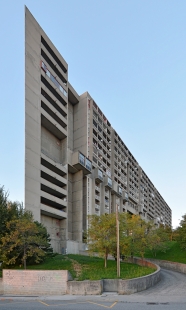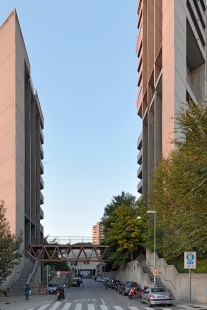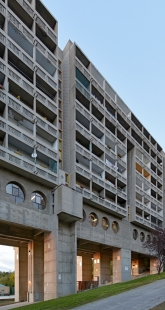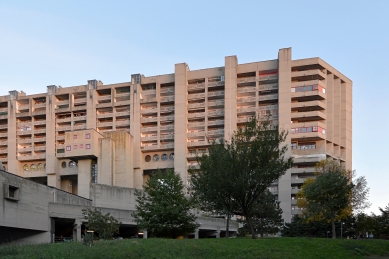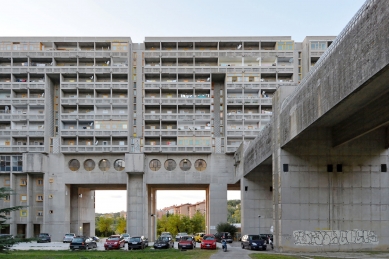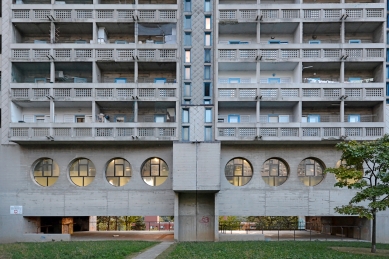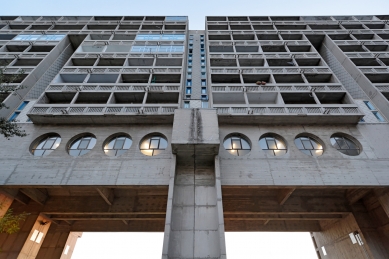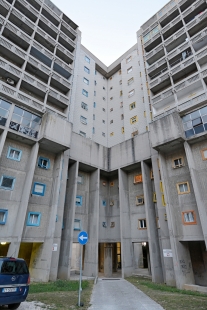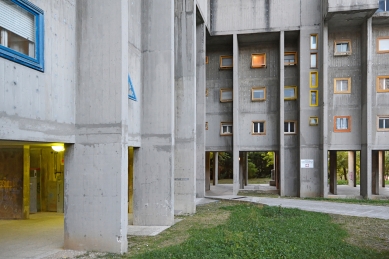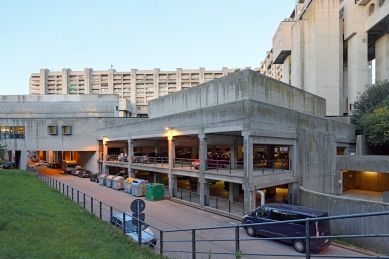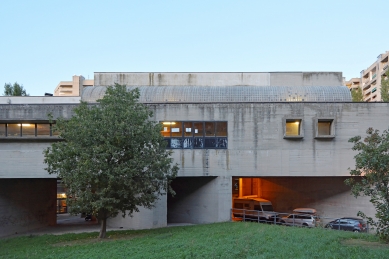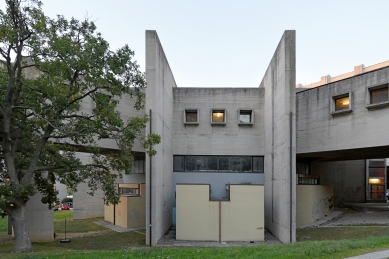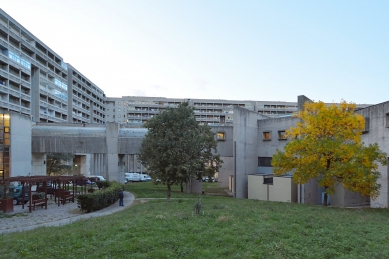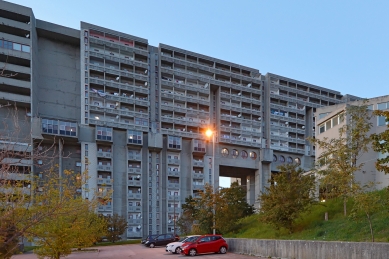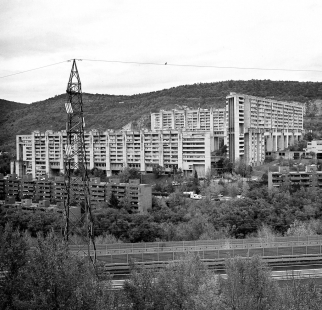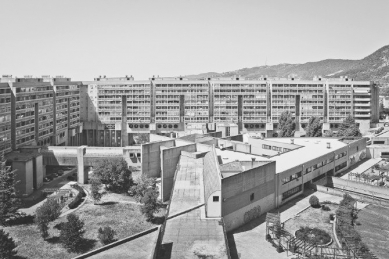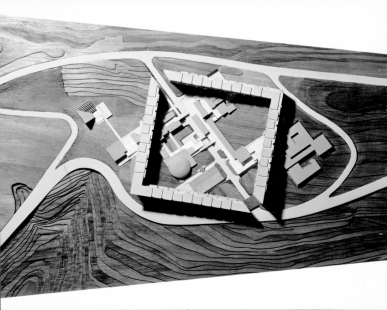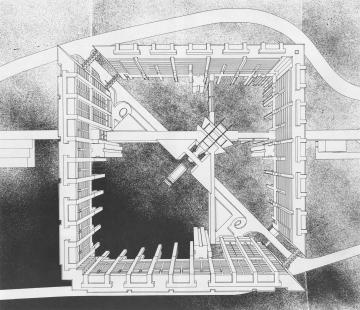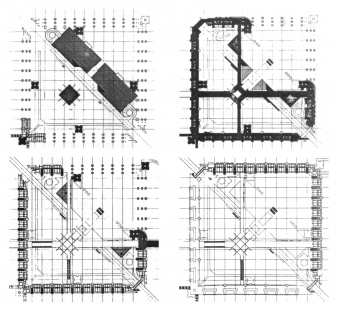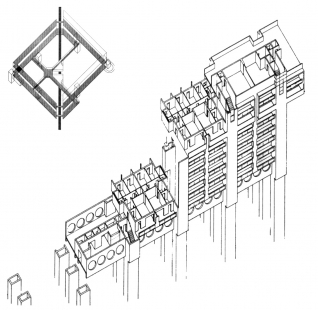
Residential complex Rozzol Melara
The Quadrilateral Rozzol Melara

Try to imagine a monastery La Tourette magnified ten times, where instead of ninety monks, thousands of ordinary people would live. Such a building does not require complicated imagination; just take a trip to the Italian port city of Trieste, where in the Rozzol valley, four kilometers southeast of the center, a residential complex for thousands of residents was built in the 1970s according to the design by Celli-Tognon. The square complex consists of pairs of brutalist L-shaped buildings located on massive pylons, which also serve as communication cores. The complex, with a total volume of 267,000 m³, spans an area of 89,000 m² and contains 648 apartments for approximately 2,500 inhabitants. The main goal of the authors was to create an independent “independent village” (villaggio indipendente) with basic amenities (shops, parish, health services, kindergarten, school...). A public pathway diagonally crosses the property with access to underground garages. All four wings of the building eccentrically connect covered corridors to a central square, where public functions are located. The strictly geometric form lightly touches the sloping landscape, which flows freely beneath the building. The panoramic view of the sea bay and port is not only available from the apartments' balconies but also from the inner courtyard garden. The main aim was to create publicly accessible housing that would distance itself from the ills of urban living while benefiting from the proximity of nature. The project was backed by the municipal company ATER, which built a quarter of all houses in Trieste over the past century, contributing to the city's development and significantly influencing its overall character (the company still manages 11% of houses in the entire province).
Although the project of the largest social housing in Trieste still evokes mixed reactions, Rozzol Melara must admit that unlike other post-war utopias in southern Italy (Vele di Scampia, Francesco Di Salvo 1962-75), this residential complex has not turned into a dilapidated zone that people would be afraid to enter after dark.
Although the project of the largest social housing in Trieste still evokes mixed reactions, Rozzol Melara must admit that unlike other post-war utopias in southern Italy (Vele di Scampia, Francesco Di Salvo 1962-75), this residential complex has not turned into a dilapidated zone that people would be afraid to enter after dark.
The English translation is powered by AI tool. Switch to Czech to view the original text source.
0 comments
add comment


